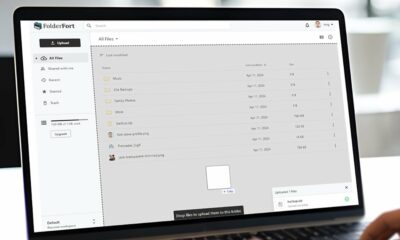MARKETING
Does your organization need a customer data platform or CDP?

Understanding your current marketing processes, knowing how to measure success and being able to identify where you are looking for improvements, are all critical pieces of the CDP decision-making process. But before embarking on the purchase process, it’s important for your organization to decide if a customer data platform is really a good fit.
Start with a comprehensive self-assessment of your organization’s business needs, staff capabilities, management support and financial resources. The following questions should help you decide.
Fragmented pieces of customer data often reside in silos in marketing, sales, purchasing, customer support and other departments. Does your organization have a system that serves as the ultimate authority on customer profiles? Do you know what customer data it includes? Is third-party anonymous data mixed in? How many applications are in your martech stack? And how does data get from one application to another? Is it transferred in real-time? Every hour? Every day? These are all areas where a CDP can help to standardize and streamline data storage and processing. However, another tool you’re using may already handle some of the CDP functionality you’re seeking.
Marketing software applications are supposed to improve data and campaign efficiency. But many times, disparate systems lead to data duplication, lack of standardization and an increase in time-consuming manual tasks. If you find yourself spending more time normalizing data or de-duplicating contact records, and less time executing campaigns or evaluating campaign performance, it might be time to automate data integration.
Virtually all CDPs deliver several core capabilities around data management, but many also provide a wide range of data analytics and orchestration features that address diverse business goals. What would having a single view of your customers do for you? For example, do you want to reduce churn by targeting customers with more relevant offers? Or increase the profitability of customer acquisition efforts by creating more accurate lookalike audiences? Don’t invest in a CDP before developing use cases that demonstrate how adoption will improve marketing performance or reduce costs. The investment should more than pay for itself.
Do you have enough clarity on your use cases and customer journeys to enable you to choose the correct solution? How will centralizing your data and audience definition impact your organization? Are you confident that all of the teams that would need to be involved — from IT to marketing to customer service — can be educated on the potential value of a CDP as part of the adoption project? Have you chosen early adopters within the organization that can provide proof points to other users?
The martech stack is getting bigger and more complex for many organizations. Streamlining integration is a core benefit of implementing a CDP, which can normalize data for easier importing and exporting into other systems. As more brands engage in omnichannel marketing through numerous martech apps, creating a unified view of the customer has become critical to marketing success.
What key performance indicators (KPIs) do you want to measure, and what decisions will you make based on CDP implementation? For example, do you want to decrease data redundancy and track how that impacts the velocity of campaign execution? Or do you want to decrease the time your marketing staff spends on manually transferring data from one system to another? Set business goals in advance to be able to benchmark success later on. More than ever before, businesses seek to quantify the ROI of their martech investments.
As with any major organizational investment, management support is essential to CDP success. Begin with small, short-term goals that demonstrate how the CDP is benefiting the business, either through cost savings or revenue gains. The key is to convince senior executives that having a single, unified view of the customer will add to the organization’s bottom line.
CDPs are typically built for marketing end-users. However, CDPs vary in the scope of their capabilities — and it is important to have some level of ongoing training to use them all. CDP vendors provide varying levels of onboarding, customer support and/or professional services. Make sure you understand what your marketing staff will need to know to effectively use the CDP, or if you lack internal resources, what type of managed services are available?
CDP vendors charge monthly license fees based on the number of data records, events (or customer actions) and applications integrated. There may be additional fees for onboarding, APIs/custom integrations or staff training. Make sure you know your business needs, data volume and how you will need to restructure your systems and staff to enable a CDP’s operations. Being aware of all of these aspects will help you understand the investment your organization will make. Keep in mind, too, that you may see cost savings if the system allows people to work more efficiently.
Customer data platforms: A snapshot
What they are. Customer data platforms, or CDPs, have become more prevalent than ever. These help marketers identify key data points from customers across a variety of platforms, which can help craft cohesive experiences. They are especially hot right now as marketers face increasing pressure to provide a unified experience to customers across many channels.
Understanding the need. Cisco’s Annual Internet Report found that internet-connected devices are growing at a 10% compound annual growth rate (CAGR) from 2018 to 2023. COVID-19 has only sped up this marketing transformation. Technologies are evolving at a faster rate to connect with customers in an ever-changing world.
Each of these interactions has something important in common: they’re data-rich. Customers are telling brands a little bit about themselves at every touchpoint, which is invaluable data. What’s more, consumers expect companies to use this information to meet their needs.
Why we care. Meeting customer expectations, breaking up these segments, and bringing them together can be demanding for marketers. That’s where CDPs come in. By extracting data from all customer touchpoints — web analytics, CRMs, call analytics, email marketing platforms, and more — brands can overcome the challenges posed by multiple data platforms and use the information to improve customer experiences.
Source link


















You must be logged in to post a comment Login